|
|
 |
Investigation of pounding of middle/high-rise RC building under long-period seismic vibration
On September 19, 1985, middle/high rise buildings around 10 to 20 stories in Mexico City were severely damaged by long period seismic motion of around two seconds. This damage was caused mainly by inadequate design code. However, it has also been pointed out that the natural periods of these buildings were close to the predominant long period of the ground motion on the soft soil of Mexico City and caused resonance. The resonances of medium/high rise buildings during long period motion are of concern in large cities located in seismic regions of many countries; improvements in structural design are in demand.
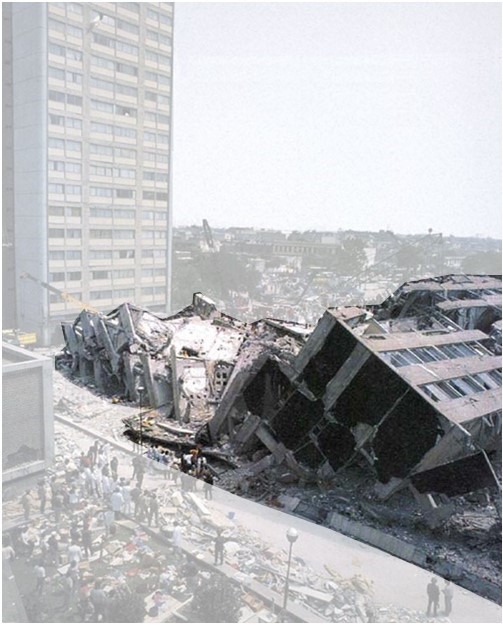
Nuevo León building collapsed in 1985 Mexico Earthquake
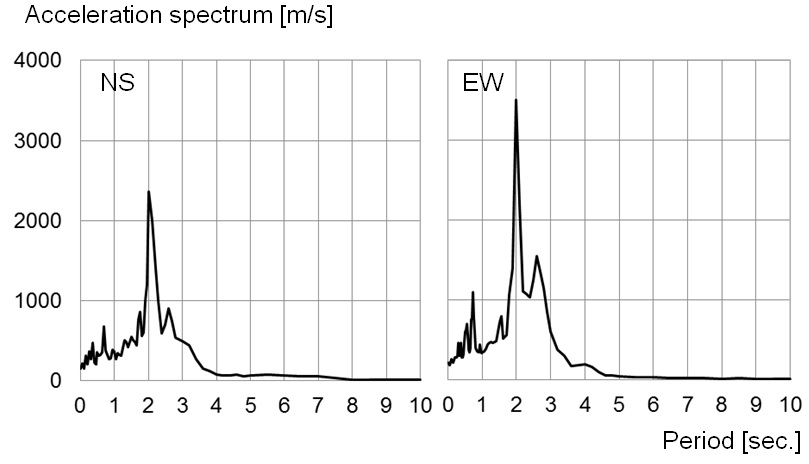
Acceleration spectrum of SCT1: Peak period is 2.0 sec.
A 14-story RC residential building Nuevo León, located in Nonoalco Tlatelolco apartment complex, is known to have suffered the most severe damage. It is supposed that the initial natural period of the Nuevo León building was approximately 1.0 second, but the period was elongated up to 2.0 seconds during the vibration due to structural damage including cracking, crushing, and bar yielding, and resonance with the ground motion occurred. The building consisted of three structurally independent units that were connected with non-structural expansion joints. After the earthquake, these joints had been destroyed, so it was supposed that pounding between the units occurred and significant impact load was applied to the building structure.
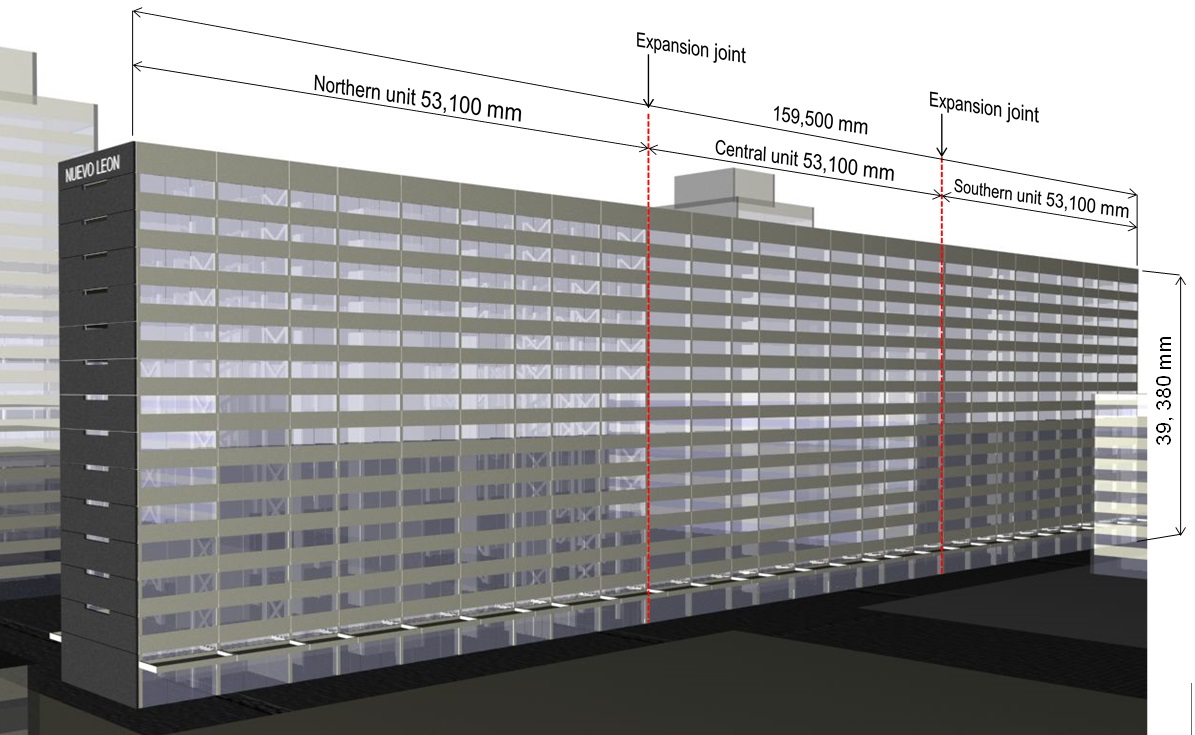
West exterior elevation of Nuevo León building
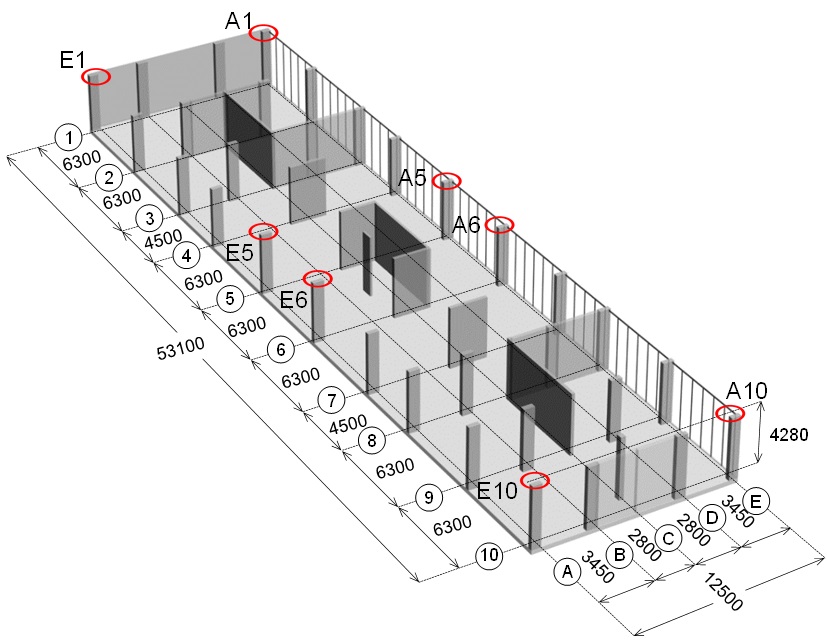
First story plan of northern unit
According to the reconnaissance in Mexico City, the pounding occurred in over 40% of the collapsed or severely damaged buildings and in at least 15% pounding was the primary cause of collapse. Several field researches on the pounding in other earthquakes (Loma Prieta 1989, Darfield 2010, Christchurch 2010, etc.) indicate that most of the buildings damaged by pounding were lower than ten stories. In this regard, 1985 Mexico Earthquake is a unique case where middle to high-rise engineered buildings were subjected to the structural pounding.
The observed pounding indicated that the elongated natural period was unequal in each building unit due to unequal levels of damage. The disaster of the Nuevo León building provided a lesson that structural design must not only consider the initial natural period but also any elongated natural period during seismic vibration and the pounding of adjacent building structures due to changed and varied natural periods.
To investigate the behavior of the Nuevo León building, several phenomena including elongation of natural period, resonance with ground motion, and pounding between adjacent buildings accompanied with transverse friction must be simultaneously considered. It is worth mentioning that the friction is supposed at the instance of pounding especially in Nuevo León, where the transverse (east-west) vibration amplitude was larger than the longitudinal (north-south). This study attempts to quantitate the period-elongation and the impact load due to contact/friction by means of finite element analyses and experimental tests by the following six steps.
(1) Two kinds of seismic response finite element analyses of a single unit of the building are conducted with /without simplified contact modeling with joint elements to approximately estimate the overall structural behavior. Time history response analysis of the single building unit model indicates that the natural period is elongated by more than twice and resonance with the ground motion occurs.
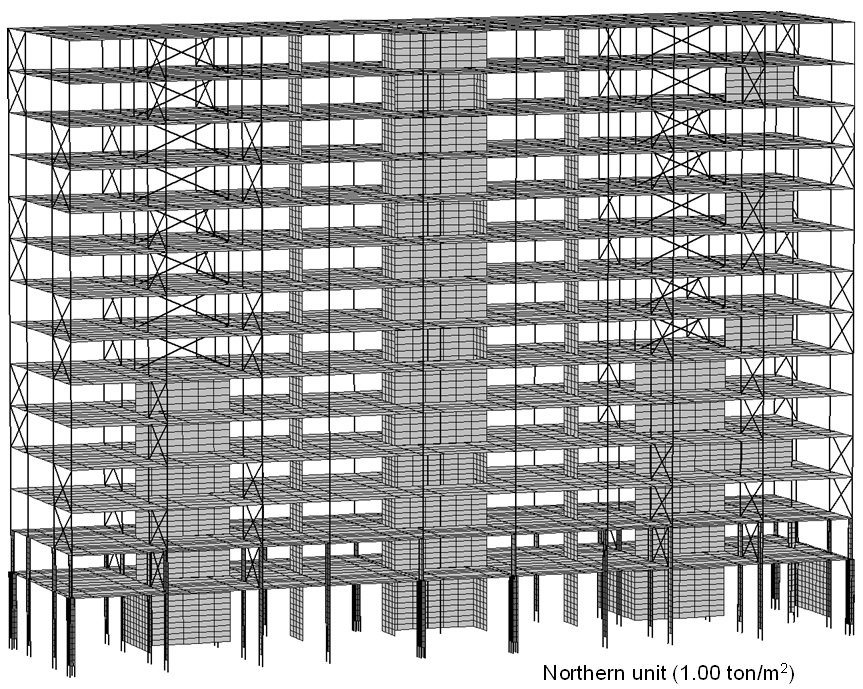
Preliminary analysis model
(2) Drop-weight tests and static loading tests of RC frames are conducted to observe shock resistance performance and residual ductility. In the impact test, the maximum drifts of the specimens are proportional to the mass of the drop weight although several collisions occur due to rebounding and the maximum acceleration is not always increased as the mass increases. The predominant periods were elongated by damage to the specimens. In a static loading test, the initial stiffness is improved and crack lengths in the hinge areas of the columns are reduced by mixing the polypropylene fibers. The measured crack lengths indicate that the impact load results in a smaller amount of crack length comparing to that by the static loading. The damage due to the impact load must be judge as three times serious as expected by the measured crack lengths.
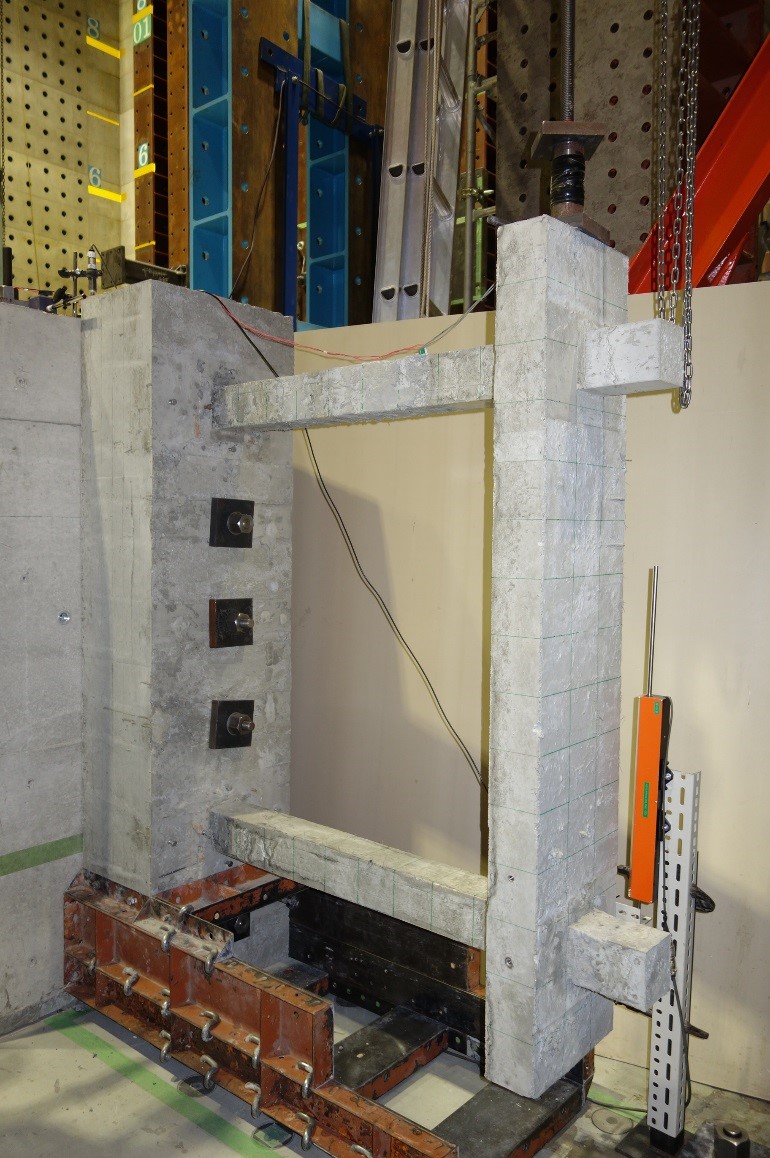
Drop-weight test specimen
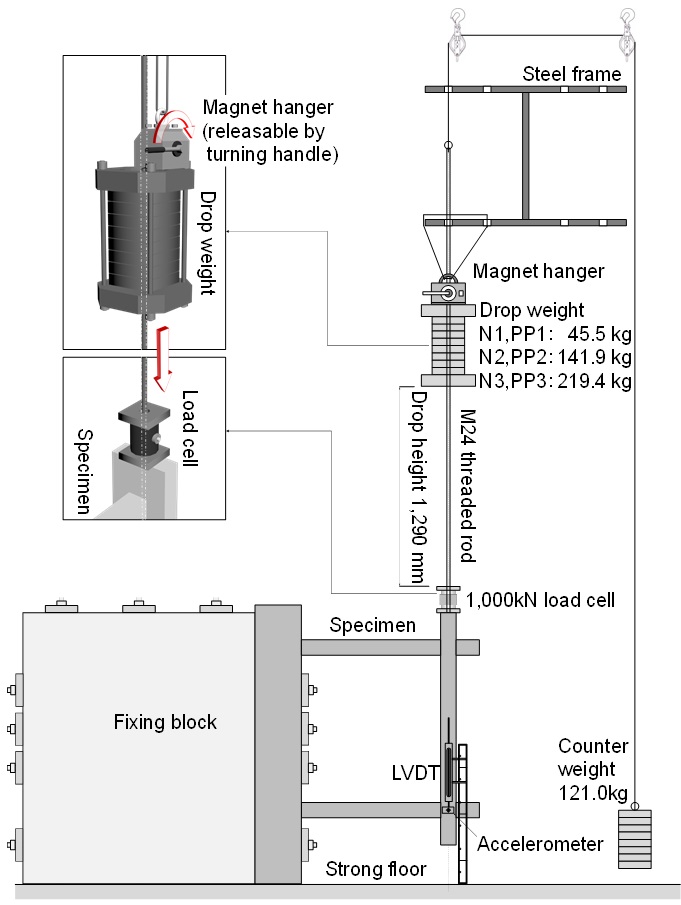
Drop-weight test setup
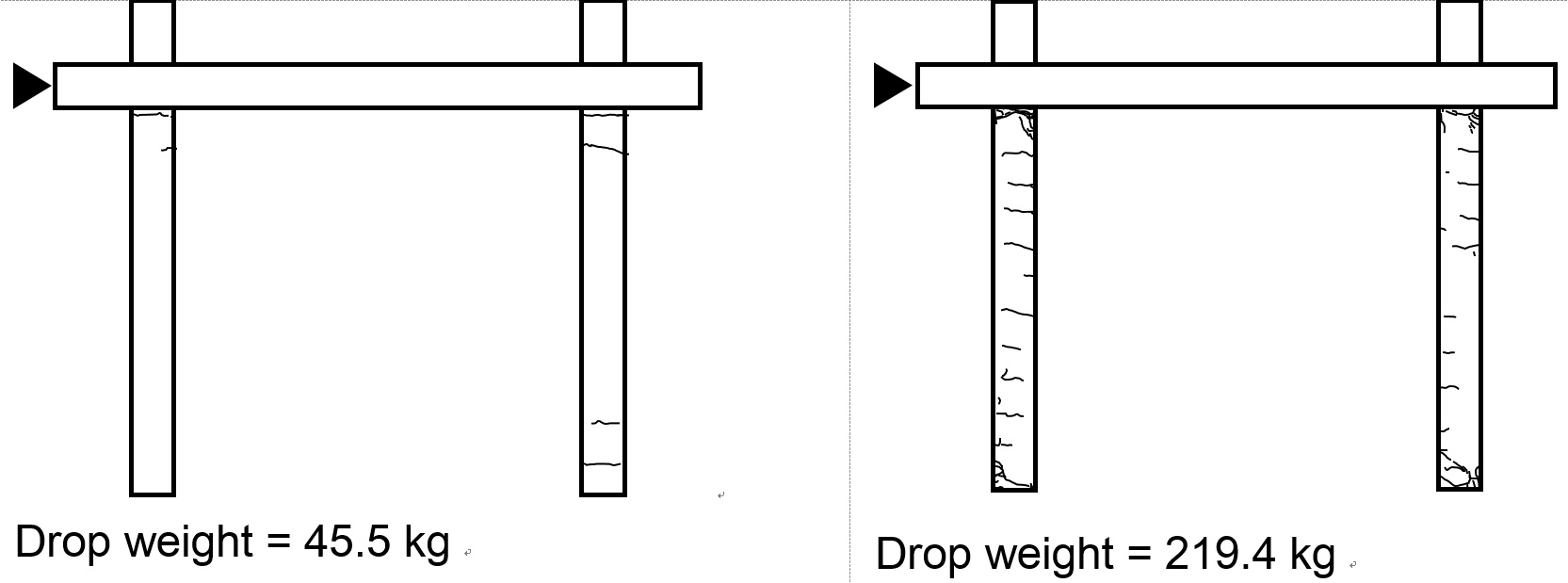
Crack patterns of specimens after drop-weight test
(3) The drop-weight test specimens are analyzed by 3DFEM. The strain-rate dependency of the compressive and tensile strengths of concrete is taken into consideration. The results show good estimates for response drifts, rebound loads, and crack patterns of the tests, although some discrepancies are found in the impact loads and the apparent coefficient of restitution. The predominant period in the response drift spectrum and the stiffness decreases after the impact, which, in general, agrees with the test results. The energy absorbed by the specimen estimated by the analyses is less than 60% of the kinetic energy of the drop weight. The results of the analyses indicate that the strain-dependency models of concrete strength are indispensable.
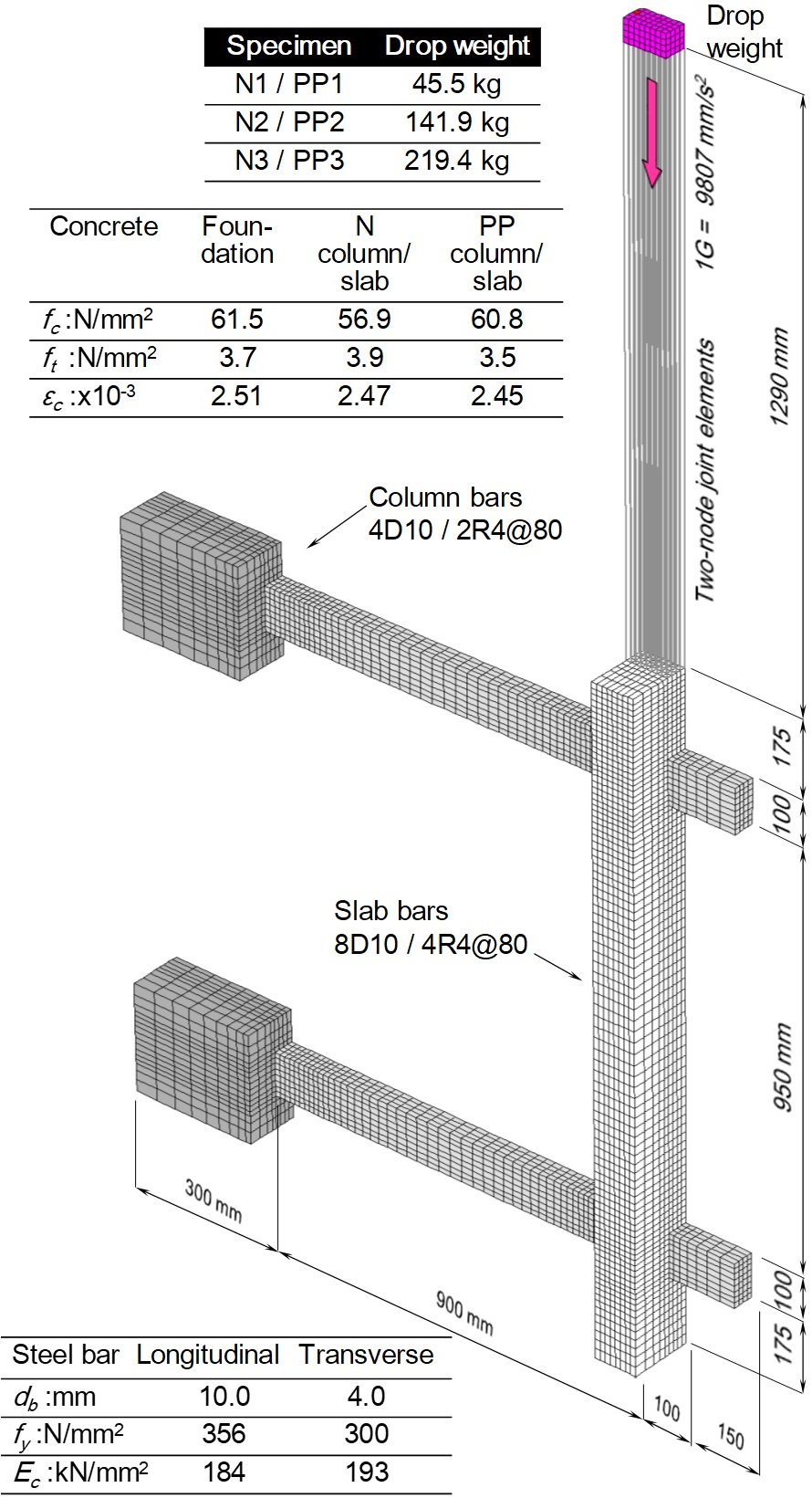
Analysis model of drop-weight test specimen
(4) Cyclic load test of two column specimens that represent a column of the building are conducted. One of the specimens is a simple column while the other consists of four pounding units, to which the column contacts during loading. Comparison of the two specimens indicates that the contact increases the lateral shear force to the column by 30%. A constitutive model of the local contact/friction behavior is developed based on this observation.
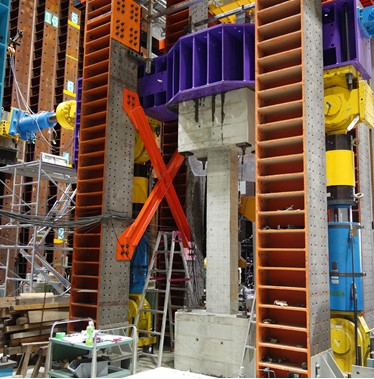
Test setup of column specimen
(5) Repeated cyclic responses of the two specimens are computed by static finite element analyses. The contact and friction behaviors are classified into normal and shear components to develop a constitutive model to be implemented into the two-node joint element.
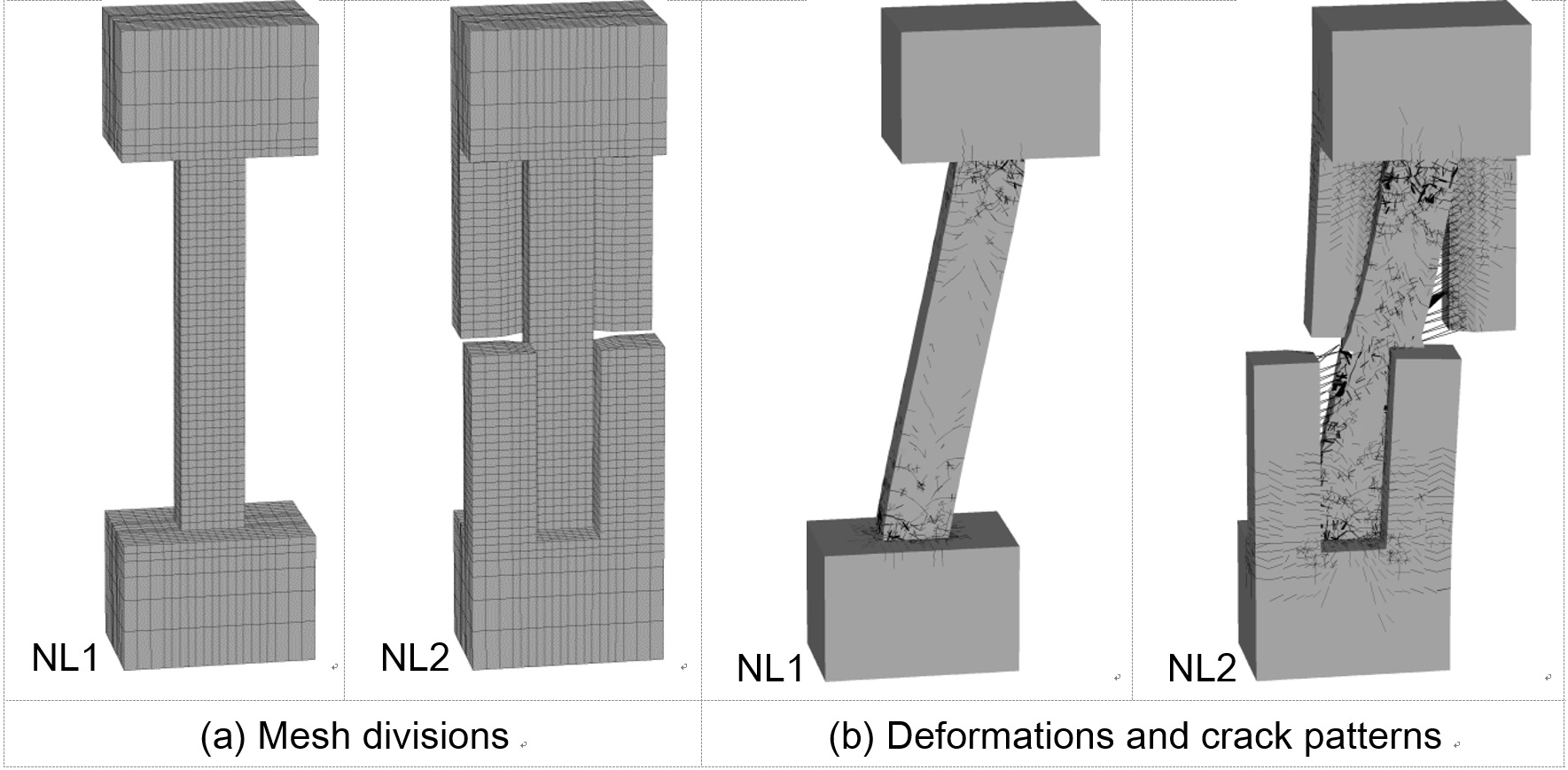
Analysis models of column specimens NL1 and NL2
(6) The above-mentioned constitutive model is implemented to a finite element model of the two adjacent building units and a time history response analysis is conducted. The evaluated pounding load induced between the building units is 0.0092 times the total weight. This load is 2.9 times the flexural strength of the column on the 14th story although it is resisted by the shear/flexural capacities of several adjacent columns. The analysis indicates that the relative velocity after the pounding is not always reduced comparing to the prior-pounding velocity. The analysis also indicates that the pounding is accompanied with the friction in the transverse and up-down directions.
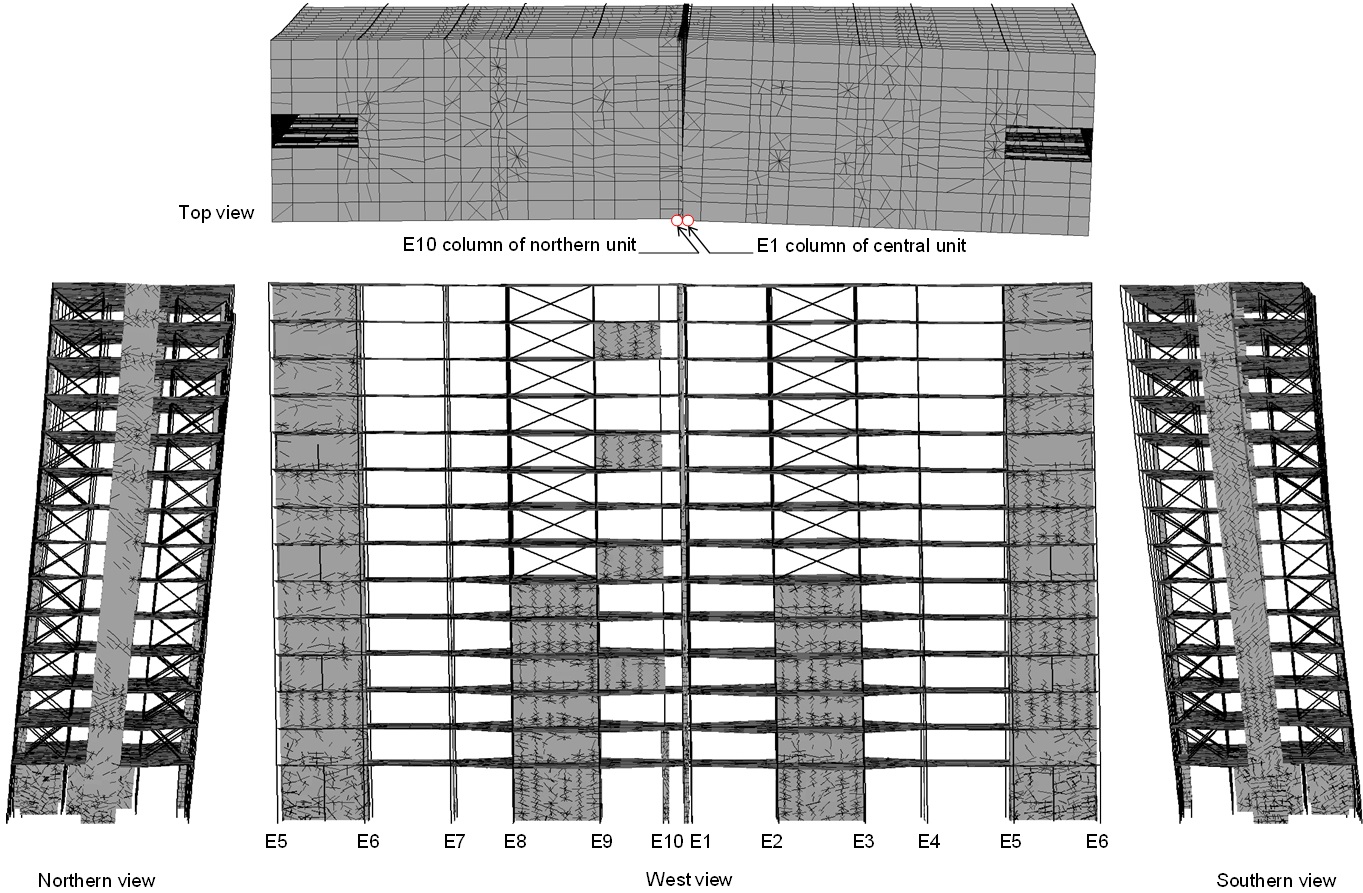
Crack pattern and deformation of two-unit model at 39.05 second.
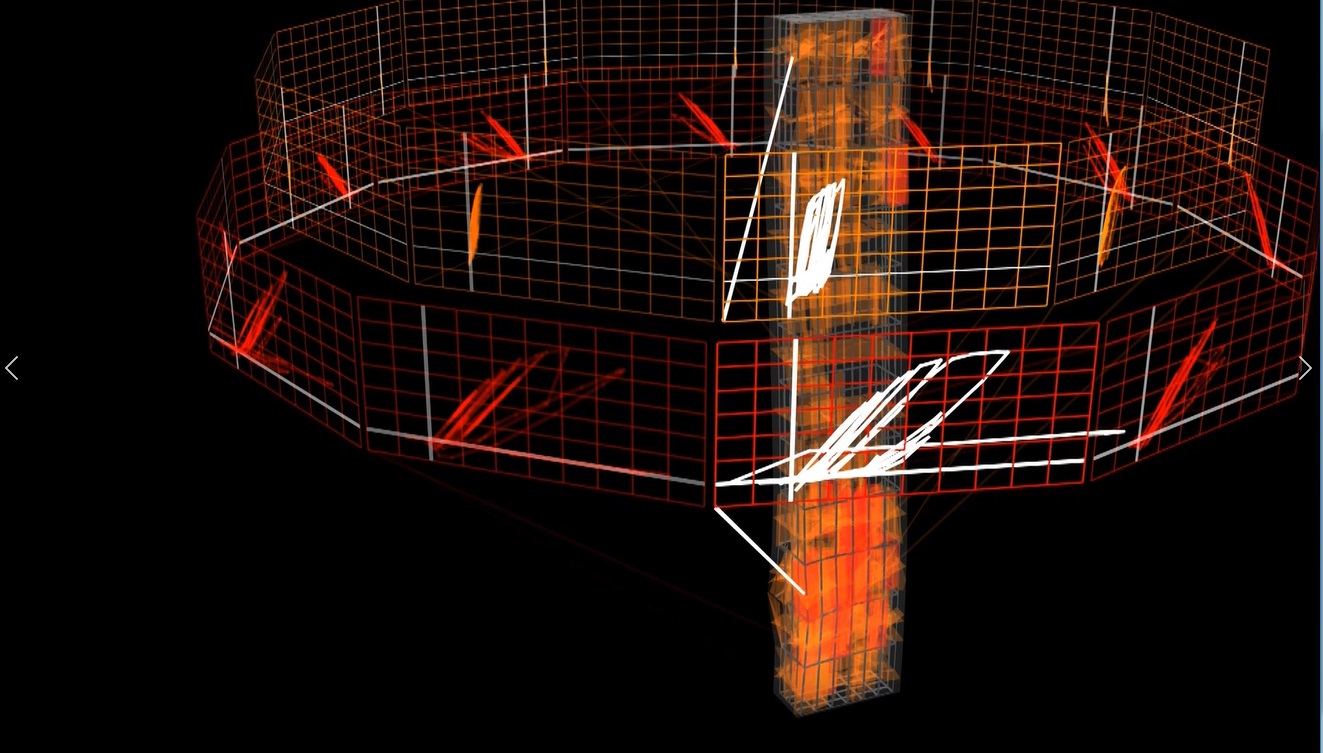
|
|
Collapse simulation of a block of Nuevo León building with visualized concrete stress-strain relationships
mp4 Media (385 MB)
|
This work is supported by MEXT / JSPS KAKENHI Grant-in-Aid for Scientific Research (C), 15K06292.
The research group consists of the following members.
CHUJO Takahiro (Takenaka Corporation, Osaka)
KANEKO Yoshio (Ph. D., Professor, Kyoto University)
HASEBE Yuma (Kyoto University)
IDA Yuika (Nippon Steel & Sumikin Engineering, Tokyo)
INOUE Ryo (Kyoto University)
MAKITA Koki (Kyoto University)
NAGANUMA Kazuhiro (Dr. Eng., Professor, Nihon University, Tokyo)
NAMIKAWA Genki (Haseko Corporation, Osaka)
SATO Yuichi (Dr. Eng., Assistant Professor, Kyoto University)
TAMAI Kengo (Kyoto University)
TERASHIMA Takamasa (Hulic Corporation, Tokyo)
UDA Yoshifumi (Kyoto University)
YAMAGAMI Yuhei (Haseko Corporation, Osaka)
YOSHIKADO Hiroshi (Haseko Corporation, Osaka)
|
|
|
|
|